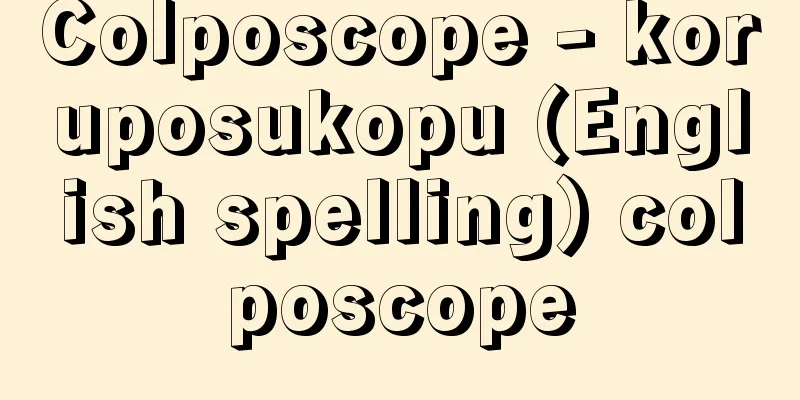Soubujirei - Soubujirei

|
Also known as the Toyotomi Peace Order. A nationwide ban on private warfare by the Toyotomi government. This concept is opposed to the commonly held understanding that Toyotomi Hideyoshi's unification of Japan and the political history of the transition from the Middle Ages to the Early Modern Period were a process of national conquest through military force and warfare. It was put forward from the perspective of viewing the basic tone of the law as a summary of the trend toward regulating private warfare (practices of self-help), such as the law of punishing both parties in a quarrel, which was widely adopted throughout the Middle Ages from feudal lords to villages, in other words, as a generalization of the trend toward peace that extended to society as a whole. When Hideyoshi established the Kanpaku government in 1585 (Tensho 13), he set out the peaceful resolution of territorial disputes between sengoku daimyo through Toyotomi jurisdiction, and called the "Sōmuji no Gi" (Ceremony of General Peace) a policy that banned all wars in the Sengoku period as private wars, and extended it from Kyushu to Kanto and Tohoku, and even Korea. The territorial adjudication under this Sōmuji decree was based on the "tōchigyo," or the end point of territorial ownership in the Middle Ages, and was called "kuniwake." Lords who accepted this and went to Kyoto had their territorial ownership confirmed as Toyotomi daimyo, and lords who violated the rule were punished by "conquest" by Toyotomi forces, but the only clan that was annihilated was the Hojo clan of Kanto. This basic tone of prohibiting private warfare also extended to the regulation of quarrels between villages, such as disputes over mountains, fields, and water at the peasant level. In other words, the regulation of the use of force and acts of retaliation between villages and peasants, that is, the practice of self-reliance and self-determination, which was considered the basic method of resolving problems in medieval society, was consistently implemented from the beginning of the establishment of the government through the "Choji" order, and villages that violated the order were punished with "seibai" (punishment). Furthermore, Toyotomi's "Kaizoku Shitei" order, which regulated piracy and piracy at sea, and the "Katanagari" order, which froze peasants' right to bear arms, were also part of this series of Sominbu policies, and the principles of the Sominbu Order, which could be called the Toyotomi Peace Order, were inherited by the Tokugawa government and maintained for a long time throughout early modern society. [Fujiki Hisashi] "Takagi Akisaku, 'Hideyoshi's Peace' and the Change in the Samurai' ('Shiso' No. 721, 1984, Iwanami Shoten)" ▽ "Fujiki Hisashi, 'Toyotomi Peace Order and Sengoku Society' (1985, University of Tokyo Press)" Source: Shogakukan Encyclopedia Nipponica About Encyclopedia Nipponica Information | Legend |
|
豊臣(とよとみ)平和令ともいう。豊臣政権による全国的な私戦禁止令。この概念は、豊臣秀吉の天下統一や中世から近世への移行の政治史を、軍事力と戦争による全国征服過程とみなす通説的な理解に対し、その基調を、中世を通じて領主層から村落にわたり広く展開した、喧嘩両成敗(けんかりょうせいばい)法など私戦(自力救済慣行)の規制の動向、つまり社会の総体に及ぶ平和の動向の総括としてとらえる立場から提起された。 秀吉は1585年(天正13)関白政権の樹立と同時に、戦国大名間の領土紛争の豊臣裁判権による平和的解決を掲げて、すべての戦国の戦争を私戦として禁止する政策を「惣無事の儀」とよんで、九州をはじめとして関東・東北から朝鮮にまで及ぼした。この惣無事令による領土裁定は、「当知行(とうちぎょう)」つまり中世の領有関係の到達点を基準とし、「国分け」とよばれた。これを受諾して上洛(じょうらく)した領主は豊臣大名として領土の知行を確定され、違反した領主は豊臣軍による「征伐」の制裁を受けたが、滅ぼされたのは関東の北条氏だけであった。 また、この私戦禁止の基調は、農民レベルの山・野・水争いなど、村どうしの喧嘩の規制にも及ぼされた。すなわち、中世社会の課題解決の基本的な方式とされた、村落と農民の武力行使や報復行為、つまり自力・自検断の慣行の総体に及ぶ規制が、「喧嘩停止(ちょうじ)」令を通じて、政権成立の当初から一貫して展開され、違反する村には「成敗(せいばい)」の制裁が加えられた。さらに、海上での八幡(ばはん)・海賊行為を規制した豊臣の「海賊停止」令や、百姓の武装権を凍結する「刀狩」令も、これら一連の惣無事の政策の一環であり、豊臣平和令ともいうべき惣無事令の原則は徳川政権にも継承され、近世社会を通じて長く維持された。 [藤木久志] 『高木昭作「『秀吉の平和』と武士の変質」(『思想』721号所収・1984・岩波書店)』▽『藤木久志著『豊臣平和令と戦国社会』(1985・東京大学出版会)』 出典 小学館 日本大百科全書(ニッポニカ)日本大百科全書(ニッポニカ)について 情報 | 凡例 |
<<: Theory of the viscera - zàng fǔ shuō
>>: Amplifier - ZOFUKUKI (English spelling) amplifier
Recommend
post secondary education
…In response, the mission of universities, namely...
Kantaka Chetiya Tower
...The Thupārama Stupa is a historic tower dating...
Aramina fibre
...The fruit is obovate, less than 1 cm long, and...
Cahta meeting - Cahta meeting
A conference held in China after the fall of the Q...
Wasabi daikon (horse-radish) - Armoracia rusticana; horse-radish
A perennial plant of the Brassicaceae family. Nati...
ulhheðinn - ulhhe inn
...In a sudden battle, he becomes violent, displa...
Kron, G. (English spelling) KronG
... Although there are some records of performanc...
bustān (English spelling) bustan
At the same time, it should be noted that the ind...
Netless fishing method
...In Japan, it has recently come to be used on P...
Tetraponera rufonigera (English spelling) Tetraponerarufonigera
…The pain caused by the sting of a fire ant is us...
Tokushichi Mishima
Metallurgist. Inventor of MK steel. Born in Awaji...
Sukizaki Kofun
This keyhole-shaped tumulus was built in the early...
Different motif - Different motif
...Dundas also found Propp's term function so...
House of Stuart - Stuart
A British dynasty that experienced the Puritan Re...
Rational Expectations and the Theory of Price Movements
...In contrast to the equilibrium state under suc...


![Fukiage [town] - Fukiage](/upload/images/67ccaf3de5355.webp)






